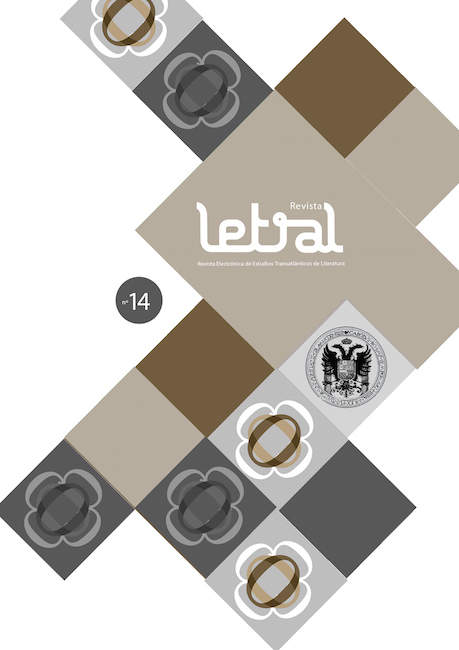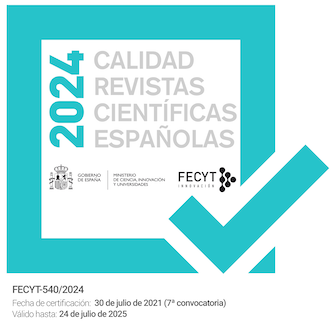Viaje y traducción en el fin de siglo latinoamericano: Rubén Darío y su rara navegación de biblioteca
DOI:
https://doi.org/10.30827/rl.v0i14.3795Keywords:
Spanish American Modernism, Translatability, World Litera¬ture, Transatlantic, LegitimacyAbstract
This research approaches the link between travel and translation with the purpose of describing the operations of reading and appropriation that Rubén Darío establishes in Los raros (1896) and that are later projected to other sections of his travel writing. The hypothesis that will be analyzed holds that Darío’s library navigation disrupts the paradigm of the “gentleman writer”, one of the hegemonic models for travel and translation at the fin de siècle. By placing emphasis on the correlative figures of the “importer” and the “lettered translator” –representations implied on discussions about national identities- recent criticism has minimized the visibility of an emerging translator at the fin de siècle, who is disputing his own legitimacy within that normative horizon. Through the analysis of the prologue that General Mitre wrote to his translation of the Divine Comedy (“Teoría del traductor”, 1899), Darío’s reception of that version in “Una nueva traducción del Dante” (1895) and the sketches in Los raros, alternatives are presented to overcome that resistance.Downloads
References
Bois, Yve-Alain and Lygia Clark (1994). “Nostalgia of the Body,” October,Vol. 69 (Summer), 85-109.
Calirman, Claudia (2012). Brazilian Art under Dictatorship: Antonio Manuel,Artur Barrio, and Cildo Meireles, Duke University Press.
Dunn, Christopher (2001). Brutality Garden, Tropicália and the Emergence of Brazilian Counterculture, University of North Carolina Press.
Escobar, Arturo (1995). Encountering Development: The Making and Unmaking of the Third World, Princeton N.J.: Princeton University Press.
Foucault, Michel (1982). “The Subject and Power,” Critical Inquiry, Vol. 8, No. 4 (Summer), 777-795.
Freire, Paolo (1968) 1996. Pedagogy of the Oppressed. London: Penguin Education.
Giunta, Andrea (2001). Vanguardia, internacionalismo y política: Arte argentino en los años sesenta, Buenos Aires, Barcelona, México: Paidós.
Katzenstein, Inés and Andrea Giunta (2004). Listen Here Now! Argentine Art of the 1960s Writings of the Avant-Garde. New York: The Museum of Modern Art.
LaDuke, Betty (1984). “Women and Art in Cuba: ‘Feminism Is Not Our Issue,’” Woman’s Art Journal, Vol 5, no. 2 (Autumn 1984 – Winter 1985), 34-40.
Lindauer, Margaret (1999). Devouring Frida: The Art History and Popular Celebrity of Frida Kahlo. Hanover: University Press of New England.
McCormack, Sabine (1991). Religion in the Andes: Vision and Imagination in Colonial Peru. Princeton. N.J.: Princeton University Press.
Mohanty, Chandra (1991). “Under Western Eyes: Feminist Scholarship and Colonial Discourses” in Third World Women and the Politics of Feminism. Mohanty, Russo and Torres eds. Bloomington and Indianapolis, Indiana University Press, 51-79.
Noorthoorn, Victoria, Minujín, Marta, and Museo de Arte Latinoamericano de Buenos Aires et al. (2010). Marta Minujín Obras 1959-1989, Buenos Aires: MALBA- Fundación Constantini.
O’Connor, Sister Mary Catherine (1942). The Art of Dying Well: The Development of the Ars Moriendi. New York: Columbia University Press.
Quiles, Daniel (2008). “Burn Out My Potentiality: Destruction and Collectivity in Greco and Minujín.” Beginning with a Bang! From Confrontation to Intimacy: Argentine Contemporary Artsits 1960-2007. New York: The Americas Society, 69-80.
Reyes, Ana María (2011). “Art at the Limits of Modernization: The Artistic Production of Beatriz González during the National Front in Colombia” Ph.D. Dissertation. Chicago: University of Chicago.
Rodríguez, Víctor Manuel (1996). “Los espejos de Beatriz González: modernismo,postcolonialidad e identificación.” In Historia Critica Revista del Departamento de Historia de la Facultad de Humanidades y Ciencias Sociales de la Universidad de los Andes, no. 13 (July–December), 21–31.
Sachs, Wolfgang (1992). A Development Dictionary, London: Zed Books.
Shildrick, Margrit and Janet Price (1999). “Openings on the Body: A Critical Introduction” in Feminist Theory and the Body: A Reader. New York: Routledge, 1-15.
Groussac, Paul (1916) [1897]. “Prosas profanas”, en Nosotros. Revista mensual de Letras, Arte, Historia, Filosofía y Ciencias Sociales, n.° 82, 157-160.
Gutiérrez, José Ismael (1992). “Traducción y renovación literaria en el modernismo hispanoamericano”, en Livius, n.° 1, 69-83.
Kirkpatrick, Gwen (2005) [1989]. Disonancias del modernismo. Buenos Aires: Libros del Rojas.
Littré, Émile (1879). Dante. L’Enfer. Paris: Hachette. Martínez, José María (2013). “Sincronías transatlánticas del modernismo: polifonía e itinerarios en la revista Pegaso (México 1917)”, en Revista Iberoamericana, vol. LXXIX, n.° 244-245, 929-947.
Mitre, Bartolomé (1922) [1889]. “Teoría del traductor”, en La Divina Comedia de Dante Alighieri. Buenos Aires: Centro cultural “Latium”, VII-XVI. Montaldo, Graciela (2007). “Exhibición, espectáculo y mal gusto: los desórdenes del Modernismo hispanoamericano”, en Revista de Estudios Hispánicos, n.° 41, 73-93.
Ortega, Julio (2003a). “Post-teoría y estudios trasatlánticos”, en Iberoamericana. América Latina, España, Portugal, vol. III, n.° 9, 109-117.--- (2003b). “Rubén Darío y la mirada mutua”, en Rubén Darío. Barcelona:Omega, 7-172.
Pagni, Andrea (2014). “Estrategias de importación cultural en revistas del modernismo rioplatense: La Revista de América (Buenos Aires, 1894) y la Revista Nacional de Literatura y Ciencias Sociales (Montevideo, 1895-1897)”, en Hanno Ehrlicher & Nanette Rißler-Pipka (eds.), Almacenes de un tiempo en fuga. Revistas culturales en la modernidad hispánica.Aachen: Shaker. Recuperado de https://www.revistas-culturales.de/es/buchseite/andrea-pagni-estrategias-de-importaci%C3%B3n-cultural-enrevistas-del-modernismo-rioplatense-la#_ftnref8
Rama, Ángel (1985). Las máscaras democráticas del modernismo. Montevideo:Fundación Ángel Rama.
--- (1998) [1984]. La ciudad letrada. Montevideo: Arca.Ramos, Julio (1989). Desencuentros de la modernidad en América Latina.México: Fondo de Cultura Económica.
Sánchez-Prado, Ignacio (2006). “‘Hijos de Metapa’: un recorrido conceptual de la literatura mundial (a manera de introducción)”, en Ignacio Sánchez-Prado (ed.), América Latina en la “literatura mundial”. Pittsburgh: Instituto Internacional de Literatura Iberoamericana/University of Pittsburgh, 7-46.
Santiago, Silviano (2012) [2004]. “El cosmopolitismo del pobre”, en Cuadernos de literatura, n.° 32, 309-325.
Siskind, Mariano (2006). “La modernidad latinoamericana y el debate entre Rubén Darío y Paul Groussac”, en La Biblioteca, n.° 4-5, 352-362.
--- (2014). Cosmopolitan Desires. Global Modernity and World Literature in Latin America. Evanston: Northwestern University Press.
Suárez León, Carmen (2001). La sangre y el mármol. Martí, el Parnaso, Baudelaire. La Habana: Centro de Estudios Martianos.
Trigo, Abril (2012). “Los estudios transatlánticos y la geopolítica del neohispanismo”, en Cuadernos de Literatura, n.° 31, 16-45.
Viereck Salinas, Roberto (2000). “Rubén Darío y la traducción en Prosas profanas”, en Anales de Literatura Hispanoamericana, n.° 29, 221-235.
Viñas, David (2005) [1964]. Literatura argentina y política. I. De los jacobinos porteños a la bohemia anarquista. Buenos Aires: Santiago Arcos.
Willson, Patricia (2005). “Élite, traducción y público masivo”, en Estudios,n.° 25, 235-251.
--- (2008). “El fin de una época: letrados-traductores en la primera colección de literatura traducida del siglo XX en la Argentina”, en Trans. Revista de Traductología, n.° 12, 29-42.
Zanetti, Susana (1994). “Modernidad y religación: una perspectiva continental (1880-1916)”, en Ana Pizarro (org.), América Latina: palavra, literatura e cultura. Vol. 2. São Paulo/Campinas: Memorial/Unicamp, 489-534.
Downloads
Published
How to Cite
Issue
Section
License
Revista Letral is an open access journal under a Creative Commons Atribución-NoComercial 4.0 license.
The works published in this journal may be reused, distributed and publicly presented for non-commercial purposes, provided that: cite the authorship and the original source of the publication (journal, publisher and URL of the work).
We strongly recommended you to share our published articles in social and scientific networks, institutional and public repositories, personal or institutional websites, blogs, Google Scholar, ORCID, ResearchID, ScopusID, etc.
The journal allow the author(s) to hold the copyright and to retain publishing rights without restrictions.
We are completely free, both for readers and authors.














